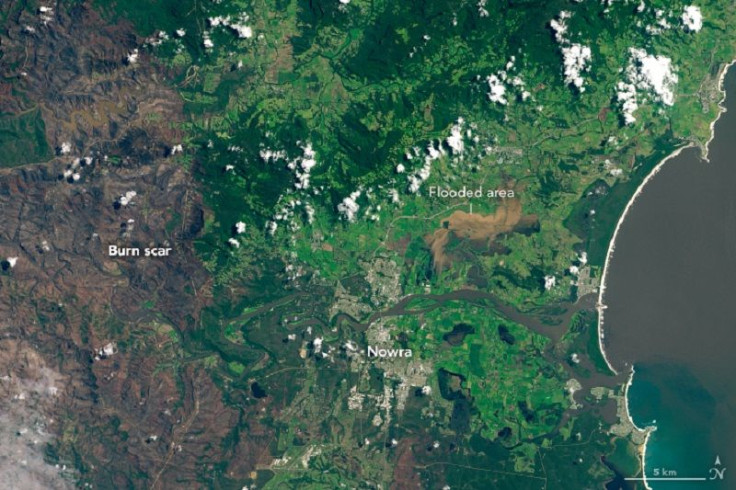NASA Satellite Image Shows Flooding In Australia After Extreme Rains
KEY POINTS
- Satellite images show the flooding in Australia as a result of extreme rainfall
- The heavy downpour has caused flooding, evacuations and school cancellations
- On the other hand, the rains also helped extinguish several major wildfires
From battling devastating wildfires and scorching temperatures, Australia is now facing flooding and extreme rains. In new images from NASA and the United States Geological Survey’s Landsat 8 satellite, the southeast coast on New South Wales can be seen devastated by muddy floods, swelled rivers and swamped lands.
In an image taken on Jan. 25, one can still see the smoke over the burn scars close to Nowra but, by the Feb. 10 image, the smoke is already gone and significant flooding can already be seen in the land around the farming communities of Nowra and Bomaderry.


Parts of New South Wales and Queensland experienced more rain in just a few days than many areas experienced in 2019 and, according to news reports, Sydney even experienced its heaviest rainfall in the last 30 years. Combined with strong winds, this event caused over 100,000 people to lose electricity, cars and fallen trees to be swept up in the floodwaters and citizens to be evacuated.
More than 50 schools also had to be closed temporarily because of the heavy flooding and, citizens have been advised to stay on high alert as category 3 cyclone Uesi is expected to bring more rains and flooding to areas that were already soaked.
The Silver Lining
The extreme rains also brought a little relief to Australia as the downpour helped to extinguish several of the massive fires that authorities have been battling for months. In fact, on Monday, the New South Wales Rural Fire Service (NSWRFS) tweeted that the rains helped to extinguish over 30 fires over the weekend, some of which had been going on for the last few months.
“This is the most positive news we’ve had in some time,” NSWRFS said.
Apart from extinguishing the devastating fires, the rains also increased the water levels in rivers and reservoirs, giving much-needed hope to farmers and water managers. This would help improve the soil condition in areas that have been suffering from drought in the last three to five years. In fact, 2019 was the hottest and driest year in the country’s recorded history. But because of the rains, some of the affected areas have started to turn green again.
© Copyright IBTimes 2024. All rights reserved.






















